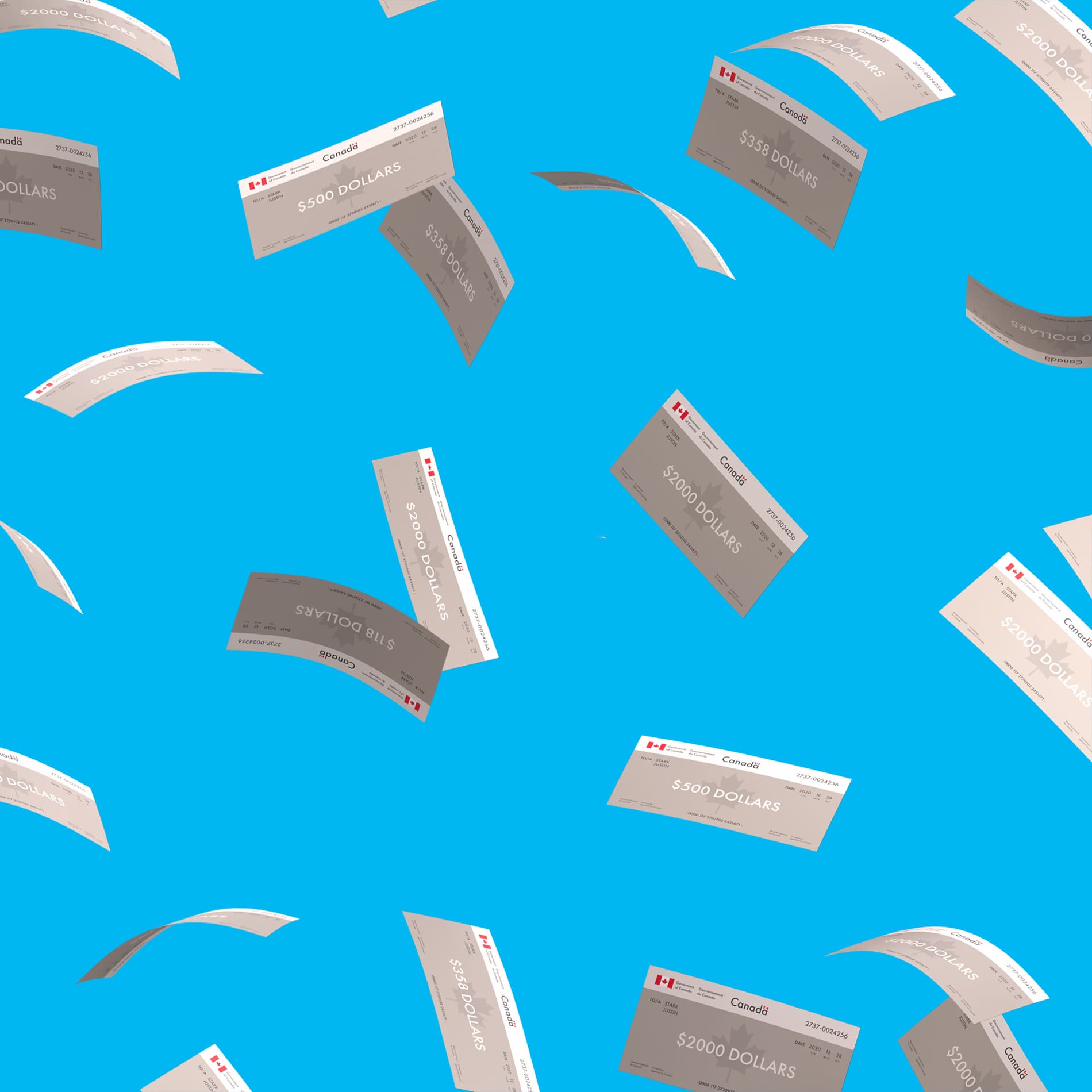
Finance for Humans
If Stocks Are So Great, Shouldn’t I Only Have Stocks?
Today we challenge WS’s investment experts with a taste of their own medicine: If stocks have the best returns, and their risk is minimal if your timetable is long enough... why are there bonds in my portfolio?
Wealthsimple makes powerful financial tools to help you grow and manage your money. Learn more
This is the latest installment of our “Ask Wealthsimple” series, where our financial gurus help you navigate the world of investing.

Sign up for our weekly non-boring newsletter about money, markets, and more.
By providing your email, you are consenting to receive communications from Wealthsimple Media Inc. Visit our Privacy Policy for more info, or contact us at privacy@wealthsimple.com or 80 Spadina Ave., Toronto, ON.
Andrew Goldman: For years now you guys have been saying the smart way to invest over the long term is to buy into the stock market as part of a diversified portfolio. But I just came across this pretty amazing chart produced by the Ontario Securities Commission. It has kind of changed my thinking. I sent you a copy of it.
Ben Reeves, Head of Investments: Yup, I got it right here.
AG: Great. So in that chart, they compiled returns for the Canadian stock market, year-to-year, from 1960 to 2013. And it seems to show that while the stock market may be risky in the short term, in the long term it couldn’t be much safer. It’s like one of those fat burning pills (except it actually works): the risk just melts away! Plus their returns are superior to just about every other investment.
So why would long-term investors not go 100% equities? Why are there bonds in my portfolio???
BR: I’m going to start by explaining why some of that reasoning is sound. The safest place for your money is cash, if you ignore inflation, which means cash is in fact slowly losing value all the time. So given that cash feels safe, if you want investors to move out of cash and take risks with their money, you have to provide what’s called a risk premium. People generally have to get paid for taking risks, otherwise why would they do it?
So if risk is one component in the risk/reward equation, the other component, as you (and that table) suggest, is time. The longer you’re invested, the lower the risk of loss tends to get. That’s why we advise investors with shorter time horizons to take less risk, and investors with longer time horizons to take more risk. That chart’s an illustration of the principle that longer-term investors should be more heavily invested in riskier assets, like stocks, which is right.
AG: I feel like there’s a “but” coming.
BR: Well, there are people who do, in fact, decide to invest completely in stocks. We even offer an all equity option for investors who want it. But it’s not really the portfolio I recommend. I think in general investors should consider not just what your expected returns are, but something that reflects unpredictability more accurately: the expected range of those returns.
AG: I don’t really understand the difference between expected returns and range of returns. Sounds awfully similar.
BR: Historically, equities offer high-average returns, yes, but they also offer a wide range of returns, even if you invest over long periods of time. To say it another way: when people talk about returns they tend to boil things down to the average return. Over the last hundred years, for instance, investing in the U.S. stock market would have had an average return of about 6% over inflation. But actual individual people don’t have average returns, they have specific returns. And those fluctuate. So if you want to understand what could happen to your investment, you have to look at the possible range of outcomes — if you were investing broadly in the U.S. market for 20 years, the worst historical outcome would have been just about tracking inflation (i.e., virtually no return on your money), while the best outcome would have seen astronomical gains.
The other question is how comfortable you are with the risk of bad returns. One way to hedge your bets against the worst outcome is to include government bonds in your portfolio. Because they don’t respond to economic conditions the same way that stocks do, they tend to help mitigate the risk of a bad outcome. They often do well when stocks do poorly.
And reducing the risk of a bad outcome, when you’re talking about your life savings or some appreciable portion of it, can be really important.
AG: That makes sense now. I think I understand it!
BR: Good. There’s one more aspect to this that’s important — behavior. Just because someone sets out to invest in the long term, doesn’t mean he or she will. Because there is a human on the other side of that portfolio, watching her or his net worth, and future, fluctuate wildly. And that kind of fluctuation can throw even the smartest investors off their plan, which is always a bad move. Stocks are really volatile, they can lose a lot of value, very quickly. And we’ve found that investors are more likely to stay invested if we include long-term government bonds to shrink the fluctuations.
At the end of the day, staying invested and continuing to save is actually more crucial than even which type of investments you make. That’s really important. Can you bold that or something.
AG: Done. Last question. If government bonds are kind of the anti-risk and you want no risk at all, you should go straight bonds?
BR: Not really. First of all, bonds themselves do carry some risk. In Wealthsimple’s growth portfolio, for instance, we use bonds with higher risk (and better returns) than most other government bonds. They’re a type of government bond that pays you back in 20-plus years — and they can lose or gain a lot. But the other thing to remember is that in order to mitigate risk, it’s important to diversify — across types of assets like stocks and bonds, and across geography and industries, and lots of other things. Just remember: choose the risk level that’s right for you, build a diversified portfolio, and stay the course.
Wealthsimple's education team is made up of writers and financial experts dedicated to making the world of finance easy to understand and not-at-all boring to read.










